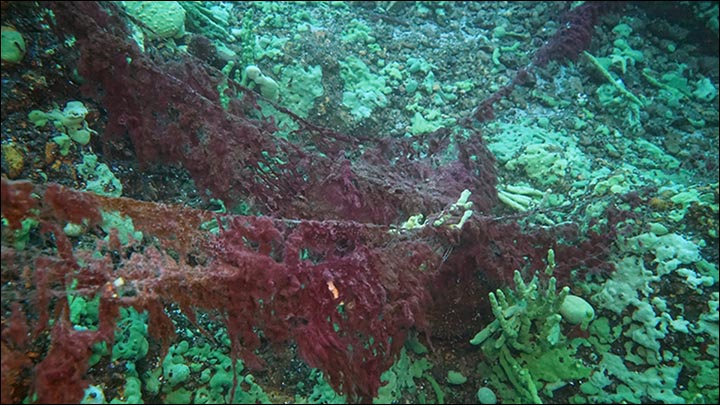

| Online: | |
| Visits: | |
| Stories: |

| Story Views | |
| Now: | |
| Last Hour: | |
| Last 24 Hours: | |
| Total: | |
Lake Baikal Sponge Has Died Out Completely in Several Areas
By Olga Gertcyk
20 December 2016(The Siberian Times) – In just two years, since the sponge was last surveyed, it has entirely vanished in the area around popular tourist resort Listvyanka and Cape Tolsty, in Irkutsk region, and over a wide area in the north of the crescent-shaped lake which contains around 20% of the world’s unfrozen freshwater.
One theory is that the lesion of the sponge in coastal areas is caused by the impact of tourists, and the pollution that accompanies them, and the consequent growth of harmful foul-smelling algae.
Igor Khanaev, of the Limnological Institute, in Irkutsk, said referring to the Listvyanka area: ‘It is clear that the waste discharged by boats have seriously changed the ecosystem of the lake in this area.’
Another is that methane leaks from the lake – the deepest on the planet – could be a factor. There have been claims the sponge is suffering from an ‘unknown disease’ caused by bacteria. Baikal sponge of 5-7 centimetres cleanses per day up to 20 litres of water from bacteria and different minerals.
Their massive presence has been seen as playing a leading role in the process of biofiltration of Baikal’s water, which over the years has been seen as uniquely pure, although now there are increasing warnings about pollution.
The average rate of growth of these animals is only about 1 centimetre per year, so a 1 metre sponge can be a century old. Yet its disappearance is far more rapid; and to restore it, once the cause of the carnage is found and countered, will take decades.
Healthy green coloured sponge has been replaced by ailing brown-tinted growths, or even swathes of pink sponge – empty skeletons of dead animals inhabited by cyanella.
Coupled with spread of spirogyra, which can be nurtured by domestic sewage seeping into the lake, leads experts to talk about an ‘ecological crisis’ for Baikal.
Dr Khanaev, head of a group of diving research and underwater monitoring, said: ‘We cannot say if colonies of filamentous algae, which harms the endemic fauna, grew in the last year.
‘But we can clearly say that the endemic fauna is in a state worse than ever. Earlier in Listvyanka area, we had some hopes of preserving the remains of the Baikal sponge or some forms of shellfish, but now there is no hope at all.’
Yet the cause of the sponge destruction is still not conclusively proven by scientists. Intriguing laboratory experiments conducted by the institute have found that – whatever the cause – the use of nanoparticles of silver maybe an antidote to the death of the sponge.
‘We take visually healthy sponge from Baikal, extract its cells through a special filter and put them in a container,’ said Dr. Sergey Belikov, head of laboratory of analytical bioorganic chemistry of the Limnological Institute. Normally, within a day or two they build a primmorph covered with epithelium. And in about a year, some of them start forming a new sponge.’
It remains early days with this work and more experiments are needed.
The theory of methane causing the disease is linked to the gas oxidizing to methanol, and the discovery of bacteria (Verrucomicrobia subdivision 6) in concentrations 60 times higher in diseased than healthy sponges.
In regular circumstances, this bacteria does not significantly affect life cycle of healthy sponge, but possibly such an active growth can cause destructive consequences.
Another expert from the same institute, Dr Nikolay Granin, head of the Laboratory of Hydrology and Hydrophysics, said: ‘At the moment we are observing methane seeps in Baikal.
‘There are deepwater seeps – at a depth of more than 380 metres – and shallow seeps, at a depth less than 380 metres. Currently, we have information about 22 – 24 deepwater seeps and more than 100 shallow seeps. We cannot say for sure if the amount of seeps increases, as the observation are not so far insufficient.’
He added: ‘As for the link between the global warming and methane seeps, there is a lot of speculation about this. We believe that the warming doesn’t affects the seeps, as the bottom temperature practically doesn’t change.
[more]
Gone: endemic Baikal sponge has died completely in several areas of the vast lake
Source: http://www.desdemonadespair.net/2016/12/lake-baikal-sponge-has-died-out.html





